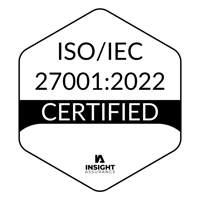For small-to-midsize nonprofits, choosing an insurance plan might seem daunting. With so many options available, it can be hard to distinguish between them all and to identify what is the best fit for your organization. The advice of a broker or consultant can be beneficial, but they shouldn't be the only one you consult when it comes to choosing a plan.
Outlined below, you'll find some of the more common options, as well as a few new approaches for health benefits for nonprofits.
Fully-Funded insurance is completely funded by the insurance company at a determined premium cost per employee per month. This plan may seem ideal as there is less to keep track of, and less financial burden, yet in the current climate, the rates are going up and the quality of care is declining within the walls of these plans.
Self-Funded insurance outlines plans in which the organization itself pays for the cost of health benefits for it's employees. Historically, this was a popular plan among larger companies as they had a strong savings reserve that they could use in an emergency or high claims year, yet, we're now beginning to see smaller organizations adopt this model regardless of the risk due to it's potential for higher savings.
Multiple Employer Welfare Arrangement (MEWA) insurance involves two or more small-to-midsize companies that combine their funds to provide shared benefits for their employees. Although this may seem ideal for organizations that struggle to find affordable health care plans for their employees, this plan has risky legal tactics and has historically been questioned by the Department of Labor.
Partially Self-Funded - insurance plans build on already existing group health insurance. Organizations purchase less expensive, high-deductible healthcare plans (HDHPs) for employees, and then provide supplementary funds for all enrolled employees. These supplementary funds help pay for out-of-pocket expenses related to having a HDHP. Organizations only pay for the services employees use, which saves money, and in some cases remaining funds can be reinvested back into the business at the end of the year. The insurance carrier shoulders most of the bigger administrative tasks and the bulk of the financial risk after the deductible has been met through supplementary funds.
Non-Traditional Healthcare Programs - In contrast to more traditional plans that are more expensive and make brokers a higher commission, there are more nontraditional brokers that focus on working with nonprofits in a similarly ACA compliant way, yet focus mainly on growth and sustainability. One such solution is Partial Self-Insurance through the Nonstop Wellness Program.
To learn more in-depth information about the advantages and disadvantages of each plan:


.png?width=1501&name=Nonstop_Logo-22-Horizontal%20(2).png)



